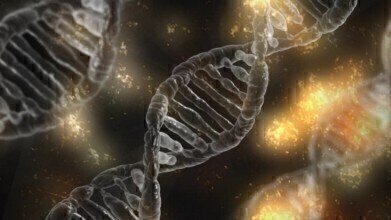News & Views
How Do Cells Change and Develop?
Nov 29 2021
An adult human has around 100 trillion cells in their body. Microscopic in size, these cells can only be viewed using highly sophisticated imaging equipment, but they form the building blocks of our bodies. Over time, cells may change and develop to adapt to the evolving needs of the body and its environment.
For example, cells divide themselves on a regular basis in order to grow tissue. This can happen when an organism is still immature and is growing, or when it becomes damaged and must repair itself. Thanks to advances in science and technology, we now have an expanded understanding of cellular functioning in the human body, especially when it comes to dividing and growing.
Cell growth
Cells grow by division. This process is managed very precisely, with many checks to ensure everything is going to plan. It is essential that the divided cells resemble each other in every single way; the new (or daughter) cells must be identical to the old (or parent) cells.
The cell cycle begins with the reception of a signal to divide itself, either due to growth or repair. The cell will then increase its size and ensure that everything is ready for division to take place. It will then perform synthesis of its DNA, meaning all genetic material within the cell is doubled. The DNA of the daughter cells is now meticulously checked to make sure the copy has been successful.
Once the checks are complete, the process of cell division – known as mitosis – can occur. One of each type of chromosome moves to opposite sides of the cell and break away, forming two different cells where once there was one. They will then rest momentarily before dividing again, until a signal arrives that enough new cells have been created.
What about cancer?
Scientists now believe that cancer is caused by a malfunction within the cell system. Mitosis normally occurs on a strictly regulated schedule, but if there is a breakdown in communication between cells then they may continue to divide and grow unnecessarily. If this happens, a tumour can form.
Tumours can be both benign and malignant. In the latter case, cancerous cells begin to spread throughout the body and they must be stopped via one or more treatment methods. Radiotherapy uses radiation to kill the offending cells, while chemotherapy uses chemical medication to vanquish them and surgery simply removes them from the infected organism.
However, given that cancer cells have the ability to change and develop in the same way that other cells do, they do not always behave the same way in every human body, nor react in the same way to treatment every time. It is this importance of their surrounding environment which intrigues scientists and has prompted the pursuit of micropatterning as a means of micro-controlling cells to inhibit the tumour’s growth.
While that concept is still in the early stages of research, it seems clear that personalised treatment plans are far more effective at overcoming cancer than generalised methods.
Digital Edition
Lab Asia 31.2 April 2024
April 2024
In This Edition Chromatography Articles - Approaches to troubleshooting an SPE method for the analysis of oligonucleotides (pt i) - High-precision liquid flow processes demand full fluidic c...
View all digital editions
Events
Apr 22 2024 Marrakech, Morroco
Making Pharmaceuticals Exhibition & Conference
Apr 23 2024 Coventry, UK
Apr 23 2024 Kintex, South Korea
Apr 23 2024 Seoul, South Korea
Apr 24 2024 Jakarta, Indonesia




.jpg)













